If you’ve been around BangShift a while…especially if you’ve been in the Forums for a long time…then you might have heard a running joke or two about my luck with gauge lights in project cars. Namely, my OG project car on BangShift, the 1981 Dodge Mirada I called the “SuperBeater” for a reason. You can look up the whole project thread HERE, but here’s the Cliff Notes for you: I bought a thoroughly thrashed Dodge for $650 and within a week or two of owning the car, the cool green gauge lights that I love about most 1970s-1990s Chrysler products packed up and effed right off. I went from one or two burnt-out gauges to total darkness, and eventually had to bite the bullet and wire in those cheapy parts-store LED lights that you plug into the cigarette lighter…even after tearing the gauges apart at least three different times trying to figure that mess out.
You never know what you have until you don’t, and when you can’t tell if you’re almost out of fuel, about to send the radiator cap to the Kármán line altitude (hint: 62 miles) or if you’re royally screwed as that lightbar-equipped Ford falls in line behind you, you will miss having gauge lights like none other. When we drove the Great Pumpkin, our 1980 Ford Mustang Ghia, down to the Mopar vs. Brand X race last fall, we had a kind of olive-green glow from the gauges, but outside of the fuel gauge, we couldn’t see a damn thing. Not the position I wanted to be in as I was shaking down a car that had been on jackstands for almost two years prior. So, I finally did something about that. Follow along for the rest of the details…
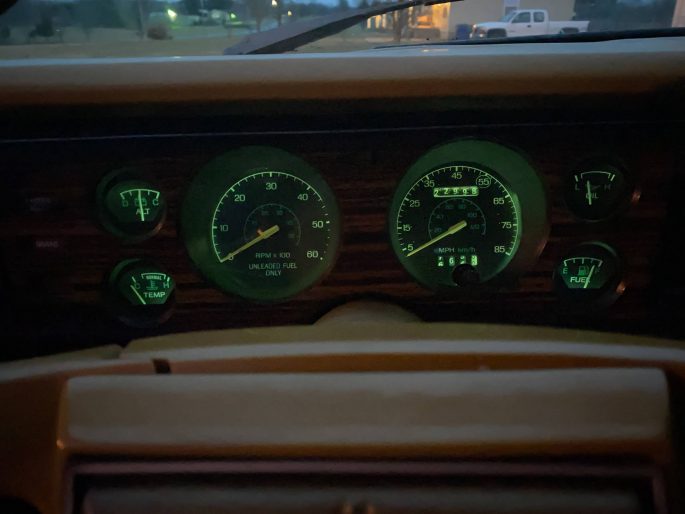
Now, I know what you’re thinking: “Your gauges look just fine here, what was the problem?” And you’re right…but you’re wrong. This is a long-exposure photo. This is what the gauges SHOULD look like, but isn’t a solid reflection of what was going on. Take this photo and turn the brightness down until the outside ambience is “midnight” and you’ll have the reality of the situation.
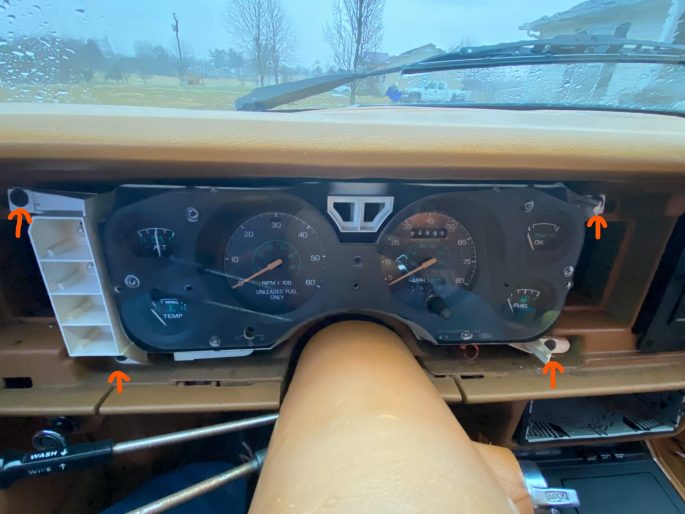
Working on a 40-something year old car’s plastic bits can be harrowing, but luckily the Pumpkin has been well cared for. The dash face is three screws, the cluster housing four more screws (arrows).
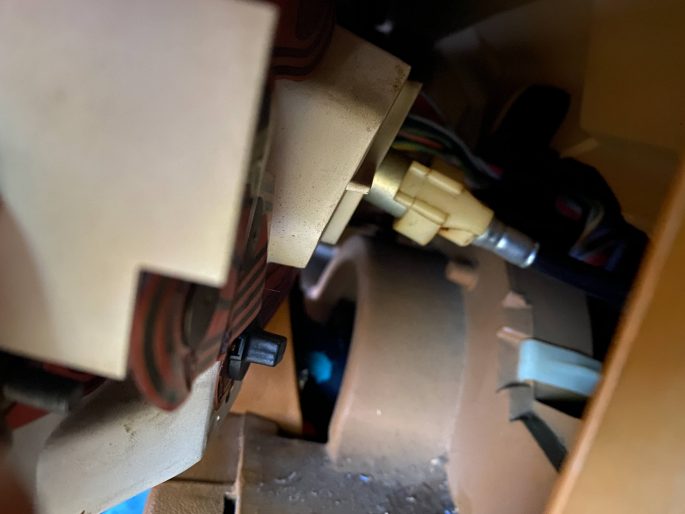
Most of this changeover was easy. The speedometer cable, on the other hand, is buried in a cavity that my gigantic paw does not fit into, and when I mangled my hand into that spot, the cable refused to unhook. Ten minutes of “strenuous negotiations” later, and we came to an understanding.

1979-86 Mustangs and Mercury Capris have two connecters for the cluster, like the 1987-up Mustangs do. They’re just located in awkward spots. One sits between the speedometer and tach, the other out of sight, between the tach and temp gauge, out of sight until the cluster comes out. Pinch the ends to unlock and pull away carefully.
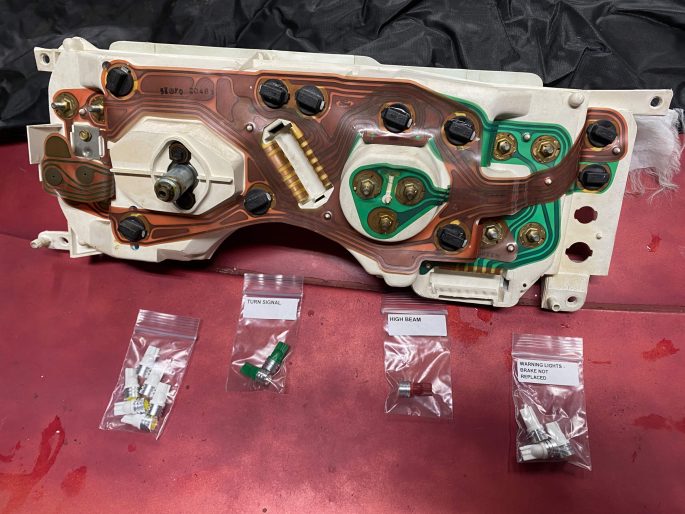
With the cluster out, we got to work on preparing the Drake Muscle Cars LED gauge lit kit. We chose the white backlight bulb kit (P/N SD-FOX-LED-GA-W) so we could keep the factory light color.

The Drake kit replaces all of the 194 incandescent bulbs with LED counterparts, except for the “BRAKE” warning indicator, which must remain an incandescent. Ford bulbs have polarity…if they are installed backwards, they don’t work. What I’m doing here is marking the end of the socket and a corresponding location on the printed circuit board. If the bulb doesn’t light up under testing, turn socket 180 degrees. If it still doesn’t light up, time to check the socket itself. After that? Start cussing.

Sounds simple, yeah? Well…no, there’s no hitch, it really was that simple. We only had a couple of bulbs not wake up when we put power back to the cluster, and turning the sockets did the trick. Note the colored turn signal bulbs and the brightness of the “FASTEN BELTS” warning light!
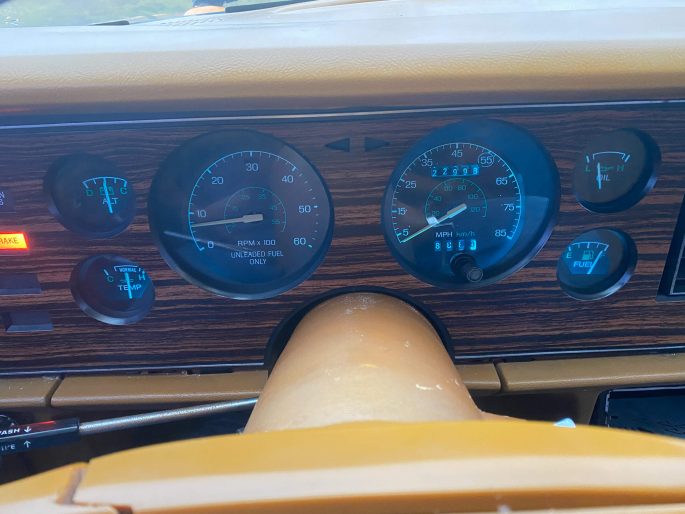
In daylight conditions, there was just about as much ambient light coming from the gauges as the “before” shot…with the long exposure. This was encouraging!
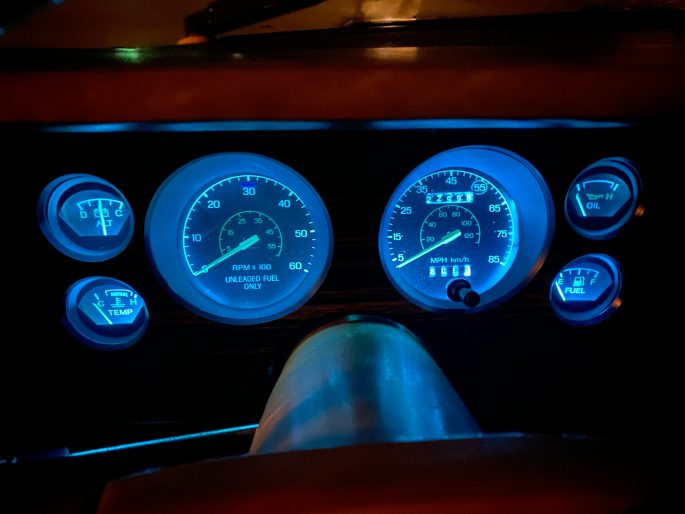
But at night? Holy shit, what a difference. It’s not so bright that it’s irritating…more like a freshly cracked chem-light. And that blue light? Well…that’s the difference between a white LED and a yellow-ish 194 bulb! I was expecting more of a green color, but I dig this! The kit cost about $35, but what an improvement over the old. They will draw less power and should last for some time to come.























I need to do this on my old truck.